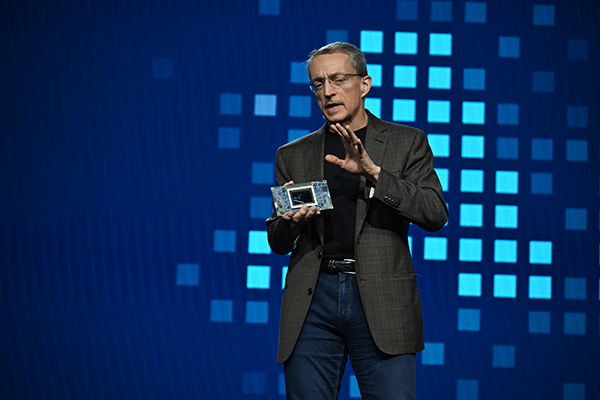Coming just a month after NVIDIA GTC, Intel’s Vision 2024 Conference this week (April 8-9, Phoenix, Arizona) was the CPU maker’s chance to mount a response, to show how it would redefine its role in the AI processor market where NVIDIA is often in the spotlight. Intel’s response was Gaudi 3, described in the announcement as “an AI accelerator, delivering 50% on average better inference and 40% on average better power efficiency than Nvidia H100—at a fraction of the cost.”
Intel Gaudi 3 for Enterprise AI
In his keynote, Intel CEO Pat Gelsinger said, “AI is making everything exciting like we haven’t seen before. It’s the biggest change in technology since the internet. It’s going to reshape every aspect of our business and yours … Enterprises are also looking cost-effective inferencing and AI training. With that, we see them turning toward Gaudi. It’s the only benchmarked alternative to the NVIDIA H100 … You’ll see many more customers coming on board as we accelerate our Gaudi offerings in 2024 and 2025.” Gaudi 3 is now available to hardware partners, including Dell, HP, Lenovo, and Supermicro.
Gelsinger also gave the audience a peek at Intel’s SoC (system on chip) codenamed Lunar Lake, designed for the era of AI PCs. “Before the competitors ship their first AI chip, we’re launching our second, with three times the AI performance … The third generation is in fabrication,” he said.
Intel would continue to deliver new generation of its Xeon CPUs. It’s now gearing to add Intel Xeon 6 to its portfolio. “We’re seeing distinct advantages in cloud native, volume container solutions, and hyperscale workloads,” he said.
Open Enterprise AI Platform
At the conference, Intel also announced the launch of an open platform for enterprise AI together with SAP, RedHat, VMware and other industry leaders. The goal is “to accelerate deployment of secure generative AI (GenAI) systems, enabled by retrieval-augmented generation (RAG),” the announcement said.
With compute-intense AI workload, the interconnects also play a critical role to accelerate the process. NVIDIA addresses it with its NVLink technology. At Vision 2024, Intel announced the formation of a consortium, aiming to create an open Ethernet networking for AI fabric. Gelsinger promised to bring “a range of software and hardware reference design for AI connectivity, because we don’t need proprietary networking for our AI connectivity solutions for the future.”
Intel unveils its AI accelerator Intel Gaudi 3. Image courtesy of Intel
Remapping the CPU Landscape
In the professional workstation market, Intel Xeon remains the dominant choice, but new alternatives are emerging, especially in cloud computing and HPC (High Performance Computing). At SIGGRAPH 2017, AMD unveiled its AMD Ryzen Threadripper CPU line, aiming to compete with the Intel Xeon line in professional workstation markets. In 2020, Apple announced a three-year plan to move toward using its own CPUs in Apple computers. By June 2023, Apple has moved its entire Mac lineup to its own chips. At GTC 2021, NVIDIA revealed its first CPU, codenamed Grace, described as “the basic building block of a modern data center.” Amazon also began producing its own Amazon Graviton CPUs for AWS (Amazon Web Services). Just this week, Google announced its own Google Axion CPUs for data centers. Most CPUs are based on the chip-building recipe licensed from ARM. With AI workloads demanding more HPC setups, the number of vendors developing their own CPUs to break away from their reliance on Intel may also grow, and for those who need it, ARM is willing to offer its instruction sets.

Wanda Parisien is a computing expert who navigates the vast landscape of hardware and software. With a focus on computer technology, software development, and industry trends, Wanda delivers informative content, tutorials, and analyses to keep readers updated on the latest in the world of computing.


